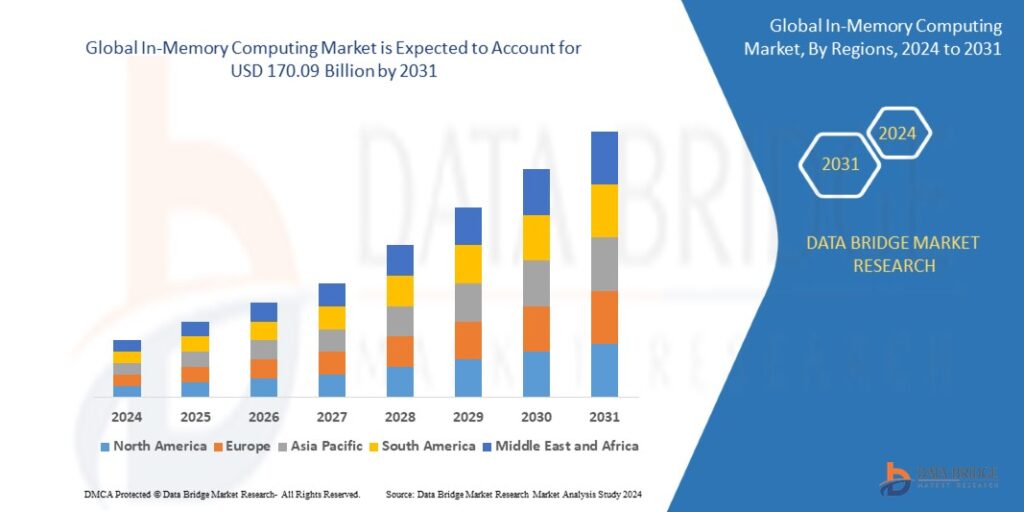Introduction
In-memory computing (IMC) is emerging as a transformative technology in the world of data processing and analytics. The ability to access and process large volumes of data in real-time has revolutionized industries from finance and healthcare to e-commerce and telecommunications. In-memory computing leverages system memory (RAM) instead of traditional storage mechanisms like disk drives to accelerate data analysis and application performance. As organizations increasingly strive for faster data processing and improved business intelligence, understanding the basics of in-memory computing and its associated benefits becomes crucial.
Definition
When data is processed and stored directly in the Random Access Memory (RAM) of the system, as opposed to conventional disc storage, this is referred to as in-memory computing. Because accessing data in RAM is substantially faster than getting it from disc storage, this method dramatically increases processing and data access speeds. Applications requiring real-time or almost real-time data processing, like big data analytics, high-performance computing, and real-time transactions, benefit greatly from in-memory computing. In-memory computing improves overall system performance and efficiency by lowering the latency related to disc I/O operations.
What is In-Memory Computing?
The process of storing data in the primary memory (RAM) of the computer to enable quicker data access and processing is known as “in-memory computing. This method contrasts with traditional data storage approaches, which typically rely on disk-based storage systems (such as hard drives or solid-state drives) that are slower in comparison to RAM. By eliminating the need to retrieve data from slower, secondary storage systems, in-memory computing significantly reduces latency and enhances the speed at which applications and systems can process information.
The key components of an in-memory computing environment include:
- In-Memory Database (IMDB): A database that uses main memory as opposed to disc storage to store data. SAP HANA, Redis, and Oracle TimesTen are a few examples.
- In-Memory Data Grid (IMDG): A distributed grid that stores data in memory across multiple nodes, enabling highly scalable and fast data access.
- In-Memory Caching: A method of temporarily storing frequently accessed data in memory to reduce access times and improve system performance.
How In-Memory Computing Works
Traditional computing systems typically involve a back-and-forth exchange of data between slower storage devices (like hard drives) and the system’s RAM. When a program or query requests data, the system retrieves it from the hard drive and processes it in memory. This process is inherently slower, as disk drives have much higher latency and lower throughput compared to RAM.
In-memory computing bypasses this bottleneck by storing all necessary data directly in the system’s memory. With modern advancements in memory technology, such as DRAM (Dynamic Random Access Memory), systems can now accommodate vast amounts of data in memory, allowing for faster query responses and real-time analytics. The entire dataset remains in memory, allowing applications to run at unprecedented speeds.
The Evolution of In-Memory Computing
The origins of in-memory computing can be traced back to the need for faster and more efficient data processing. In earlier times, traditional disk storage solutions were adequate, but as data volumes grew and business processes became more complex, the limitations of these systems became apparent.
Advances in technology—such as the development of 64-bit computing, the reduction in the cost of RAM, and the growing demand for real-time analytics—contributed to the rise of in-memory computing. Today, IMC is used across industries for a wide range of applications, from financial transaction processing to predictive analytics and fraud detection.
Key Benefits of In-Memory Computing
In-memory computing offers a range of significant benefits to businesses and organizations, particularly those dealing with large datasets and time-sensitive data processing tasks. Some of the most notable benefits include:
Lightning-Fast Data Processing:
One of the most compelling advantages of in-memory computing is its ability to process data at unprecedented speeds. Because data is stored in the main memory rather than being retrieved from slower disk-based storage, organizations can analyze data and run applications with minimal latency.
Real-Time Analytics and Insights:
IMC enables businesses to perform real-time data analytics, allowing them to generate insights faster than ever before. This is particularly valuable in industries such as finance, healthcare, and retail, where timely data analysis can lead to better decision-making, enhanced customer experiences, and a competitive advantage.
Scalability:
Modern in-memory data grids (IMDGs) can scale horizontally across multiple nodes, meaning they can handle increasing workloads and data volumes without sacrificing performance. This scalability is essential for large organizations dealing with ever-growing data sets.
Simplified Data Architecture:
Traditional systems often rely on complex data architectures involving numerous layers of caching, indexing, and disk-based storage. In-memory computing simplifies this by removing the need for disk storage and other architectural components, streamlining data access and reducing the burden on IT teams.
Reduced Total Cost of Ownership (TCO):
Although RAM has traditionally been more expensive than disk storage, the overall cost savings associated with in-memory computing often outweigh the initial investment. Faster processing times lead to improved operational efficiency, which translates to lower energy consumption and reduced hardware costs over time.
Improved User Experience:
Applications that utilize in-memory computing can offer users faster response times and a smoother experience. Whether it’s a customer interacting with an e-commerce website or an employee running a complex business intelligence report, the faster performance provided by in-memory computing leads to increased satisfaction.
Enhanced Fraud Detection and Risk Management:
In-memory computing’s ability to process large volumes of data in real-time is particularly valuable in industries where fraud detection and risk management are critical. By analyzing transactions and patterns in real-time, financial institutions, for instance, can detect fraudulent activity more quickly and respond accordingly.
Use Cases of In-Memory Computing
In-memory computing has a wide range of applications across different sectors, all of which benefit from its fast processing capabilities:
- Financial Services: Banks and financial institutions use in-memory computing to process high-frequency trades, manage real-time risk, and detect fraudulent transactions. With millions of transactions occurring every second, in-memory computing ensures that analysis and responses happen instantly.
- Healthcare: In healthcare, in-memory computing is used for processing massive datasets, such as patient records, medical histories, and genomic data. It helps clinicians and researchers generate real-time insights for more accurate diagnostics, treatment plans, and predictive healthcare.
- Retail and E-Commerce: Retailers use in-memory computing to analyze consumer behavior in real-time, making personalized recommendations and dynamically adjusting pricing. This technology also helps in optimizing inventory management and improving supply chain efficiency.
- Telecommunications: Telecom companies use in-memory computing for real-time network monitoring, optimization, and fraud detection. With IMC, they can manage millions of connections and data streams with minimal delay, ensuring optimal network performance and customer satisfaction.
- Manufacturing: Manufacturing companies use in-memory computing for real-time monitoring of production lines, predictive maintenance, and optimizing supply chains. The ability to analyze data in real time leads to faster decision-making and reduced downtime.
Challenges and Limitations of In-Memory Computing
Despite its many advantages, in-memory computing also has its challenges and limitations, including:
- Cost of Memory: While the cost of RAM has decreased over the years, it remains more expensive than traditional disk storage, which can be a barrier for smaller organizations or those with limited budgets.
- Data Volatility: Since data is stored in memory, it can be lost if the system crashes or is rebooted unexpectedly. To mitigate this, in-memory computing systems often need backup mechanisms or hybrid models that incorporate persistent storage.
- Scalability Concerns: Although in-memory data grids provide scalability, managing and configuring these systems in large distributed environments can become complex.
Growth Rate of In-Memory Computing Market
The size of the global in-memory computing market was estimated at USD 30.43 billion in 2023 and is expected to grow at a compound annual growth rate (CAGR) of 24.00% from 2024 to 2031, reaching USD 170.09 billion.
Read More: https://www.databridgemarketresearch.com/reports/global-in-memory-computing-market
Conclusion
In-memory computing is rapidly gaining traction due to its ability to deliver lightning-fast data processing, real-time analytics, and scalability. With its many applications across industries such as finance, healthcare, and retail, it is transforming the way organizations approach data processing. While the technology does come with certain challenges, the benefits it offers—such as faster decision-making, reduced complexity, and improved operational efficiency—make it an essential tool for businesses looking to thrive in today’s data-driven world.



